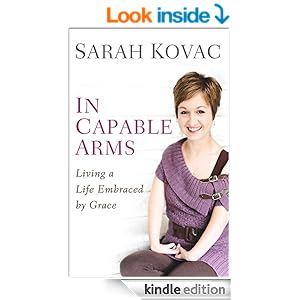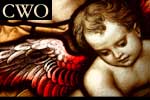City of Stairs
by Robert Jackson Bennett
Broadway Books
Published 2014
464 pages
ISBN: 978-0804137171
Paperback $9.49
Kindle $7.99
The City of Stairs “boasts” a perfect heroine. By the third chapter I knew how special this particular snowflake was and that set my impatience in motion. City of Stairs is a cross genre — detective and fantasy novel. I wasn’t too displeased about the author using detecting as a means of examining the culture. But I did get annoyed that our heroine always had the answer for everything. Mary Sue perfection in the extreme.
Imagine a continent whose indigenous population —and whose gods— have been defeated by a smaller nation they had formerly enslaved. The conquerors, the Saypuris, have no gods and they have done what all imperialistic nations do: they’ve removed almost all traces of the Continental’s gods from the public sphere. However, one cannot erase history or a culture’s nostalgic attachment to its deities. Thus, secret adherents to the old gods still persist. As do many “miracles.” Religious extremists, called Restorationists, are going around fomenting riots. The miracles are also problematic because they really shouldn’t be happening without a god operating them.
When the novel begins, an important Saypuri historian has been assassinated. He had a special love of Continental culture and seemed to have stumbled upon something that cost him his life. Are the Restorationists behind his murder? Are the gods and the Restorationists working together? Heck, are the gods still around? And if they are, what do they want? And do we —the reader— really want these gods around?
Now this is where the book and I began to part. I also will have to part ways with readers who consider religion evil. Yep, there are many things in this book which I dislike which readers might actually love. So, here goes.
True, the Continentals have a very backward attitude toward women and homosexuals. But as a dark-skinned religious woman, I’m hard-wired to be on the side of the religious Continentals. I dislike imperialists even if the heroine is imperialistic lite and “admires” the religion of the conquered Continentals. She’s not scornful but she is smug and patronizing. And she has taken on the imperialist burden of preventing a culture from finding its past. Let me confess that as a kid I was always on the “Indians’ side” whenever I watched cowboy movies. I always rooted for the monster to win when I watched Creature Features. And no matter how weird the religion was in any film or book —nonfiction or fictional— if they were battling atheists, I was always on the side of the religious characters. Religion, history, and politics make strange bedfellows.
Seeing this is my personality, I ploughed through the story, knowing that I was really just being peevish. I tried to give the novel a chance. But a rich effete closeted gay aristocrat whose cultural politics and religion is ruled by his sexuality, a tough-as-nails ball-buster female governor, a brawny Hagrid-like bodyguard from the north, and an ignorant emotional judgmental misogynist religious conservatives Big Bad were all stereotypes I had to wade through. Funny thing though: I couldn’t stop reading because of the fantastic worldbuilding.
The worldbuilding and the detective story go perfectly well together. Our stereotypically open-minded and plucky heroine is up for her task of discovering all that is left of Continental history and destroying it. The way the world is built, the history and ramifications of each deity’s power, the social implications of cultural war —and the interactions of the various religions — were so well-drawn, they were amazing! The worldbuilding made for a good book.
Still, ultimately, the “war against the gods” thing irked me. Again, it probably won’t irk most secular-thinking scifi/fantasy readers but the whole “Who watches the Watchers” Star-trekking of religion can really bother a conservative religious person. So, excellent book. But not for me.
by Robert Jackson Bennett
Broadway Books
Published 2014
464 pages
ISBN: 978-0804137171
Paperback $9.49
Kindle $7.99
The City of Stairs “boasts” a perfect heroine. By the third chapter I knew how special this particular snowflake was and that set my impatience in motion. City of Stairs is a cross genre — detective and fantasy novel. I wasn’t too displeased about the author using detecting as a means of examining the culture. But I did get annoyed that our heroine always had the answer for everything. Mary Sue perfection in the extreme.
Imagine a continent whose indigenous population —and whose gods— have been defeated by a smaller nation they had formerly enslaved. The conquerors, the Saypuris, have no gods and they have done what all imperialistic nations do: they’ve removed almost all traces of the Continental’s gods from the public sphere. However, one cannot erase history or a culture’s nostalgic attachment to its deities. Thus, secret adherents to the old gods still persist. As do many “miracles.” Religious extremists, called Restorationists, are going around fomenting riots. The miracles are also problematic because they really shouldn’t be happening without a god operating them.
When the novel begins, an important Saypuri historian has been assassinated. He had a special love of Continental culture and seemed to have stumbled upon something that cost him his life. Are the Restorationists behind his murder? Are the gods and the Restorationists working together? Heck, are the gods still around? And if they are, what do they want? And do we —the reader— really want these gods around?
Now this is where the book and I began to part. I also will have to part ways with readers who consider religion evil. Yep, there are many things in this book which I dislike which readers might actually love. So, here goes.
True, the Continentals have a very backward attitude toward women and homosexuals. But as a dark-skinned religious woman, I’m hard-wired to be on the side of the religious Continentals. I dislike imperialists even if the heroine is imperialistic lite and “admires” the religion of the conquered Continentals. She’s not scornful but she is smug and patronizing. And she has taken on the imperialist burden of preventing a culture from finding its past. Let me confess that as a kid I was always on the “Indians’ side” whenever I watched cowboy movies. I always rooted for the monster to win when I watched Creature Features. And no matter how weird the religion was in any film or book —nonfiction or fictional— if they were battling atheists, I was always on the side of the religious characters. Religion, history, and politics make strange bedfellows.
Seeing this is my personality, I ploughed through the story, knowing that I was really just being peevish. I tried to give the novel a chance. But a rich effete closeted gay aristocrat whose cultural politics and religion is ruled by his sexuality, a tough-as-nails ball-buster female governor, a brawny Hagrid-like bodyguard from the north, and an ignorant emotional judgmental misogynist religious conservatives Big Bad were all stereotypes I had to wade through. Funny thing though: I couldn’t stop reading because of the fantastic worldbuilding.
The worldbuilding and the detective story go perfectly well together. Our stereotypically open-minded and plucky heroine is up for her task of discovering all that is left of Continental history and destroying it. The way the world is built, the history and ramifications of each deity’s power, the social implications of cultural war —and the interactions of the various religions — were so well-drawn, they were amazing! The worldbuilding made for a good book.
Still, ultimately, the “war against the gods” thing irked me. Again, it probably won’t irk most secular-thinking scifi/fantasy readers but the whole “Who watches the Watchers” Star-trekking of religion can really bother a conservative religious person. So, excellent book. But not for me.










